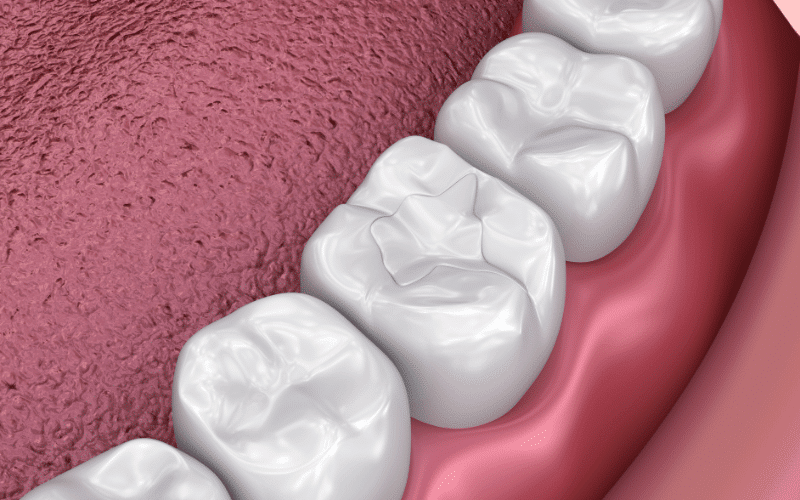Understanding Sealants for Children
Sealants are thin coatings made from plastic or other dental materials. They’re applied to the chewing surfaces of molars and premolars, where decay commonly occurs. The purpose of a sealant is to fill in the deep grooves and fissures of teeth, creating a smooth surface that is easier to clean. By sealing off these vulnerable areas, sealants act as a barrier, preventing bacteria and food particles from settling in and causing cavities.
The Importance of Sealants
Sealants provide an additional layer of protection against tooth decay. They effectively block out bacteria and food debris, reducing the risk of cavities in children’s teeth. This is particularly crucial for cavity-prone kids who may have difficulty maintaining optimal oral hygiene. Sealants offer a proactive approach to dental care, helping to safeguard your child’s teeth from potential damage.
Are Cavity-Prone Kids at Higher Risk?
Children who have a history of cavities are indeed at a heightened risk of experiencing further decay. Their teeth may have deeper grooves and fissures, making them more susceptible to bacterial infiltration. For these children, sealants play a vital role in providing added protection against future cavities. It’s essential to prioritize preventive measures to maintain their oral health.
Initial Sealant Application
The ideal time to apply sealants is when a child’s permanent molars erupt, typically around the age of six. These molars are particularly prone to decay due to their location at the back of the mouth and their rough chewing surfaces. By applying sealants early, dentists can effectively seal off these vulnerable areas and help prevent cavities from developing.
Reapplication: Is It Necessary?
While sealants are durable, they may wear down over time, especially in children who frequently chew hard foods or grind their teeth. Regular dental check-ups are essential for assessing the condition of the sealants. Dentists can determine whether reapplication is necessary based on the wear and tear observed during examinations.
Frequency of Reapplication
The frequency of sealant reapplication varies depending on individual factors such as the child’s oral hygiene habits and the condition of the sealants. Some children may need their sealants replaced every few years, while others may go longer without requiring reapplication. Dentists evaluate each child’s unique needs and make recommendations accordingly.
Monitoring Your Child’s Sealants
Regular dental visits are crucial for monitoring the condition of your child’s sealants. During these check-ups, dentists thoroughly examine the sealants for any signs of wear, damage, or deterioration. Early detection allows for prompt intervention, ensuring that the sealants continue to provide effective protection against cavities.
Sealants vs. Fillings
It’s important to understand the distinction between sealants and fillings. Sealants are a preventive measure designed to stop cavities from forming by sealing off vulnerable areas of the teeth. In contrast, fillings are a treatment for existing cavities, where decay has already occurred. By investing in sealants, you can potentially avoid the need for fillings altogether, sparing your child from the discomfort and expense of dental procedures.
Cost-Benefit Comparison
While there is an initial cost associated with sealant application, it’s essential to consider the long-term benefits. Sealants can help prevent cavities, which in turn reduces the need for more extensive and costly dental treatments such as fillings or crowns. By investing in sealants, you can save money in the long run while safeguarding your child’s oral health.
Encouraging Oral Hygiene
While sealants provide valuable protection against cavities, they should not replace proper oral hygiene practices. It’s important to instill good habits in your child from a young age, including brushing twice a day, flossing regularly, and attending routine dental check-ups. These habits, combined with the protection of sealants, can help ensure your child maintains a healthy and beautiful smile for years to come.
Sealants for children in Allen, TX, offer an effective means of preventing cavities, especially for those who are cavity-prone. By understanding the importance of sealants and prioritizing regular dental care, you can help safeguard your child’s oral health and well-being. Investing in sealants today can lead to a lifetime of healthy smiles tomorrow.


